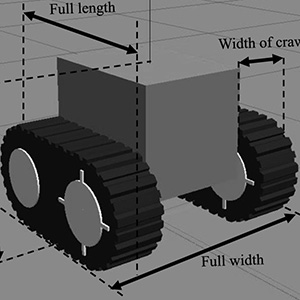 Smart Citations
Smart CitationsSee how this article has been cited at scite.ai
scite shows how a scientific paper has been cited by providing the context of the citation, a classification describing whether it supports, mentions, or contrasts the cited claim, and a label indicating in which section the citation was made.
Automatic travelling of agricultural support robot for a fruit farm. Verification of effectiveness of real-time kinematic-global navigation satellite system and developed a simulator for specification design
Labour shortages and fatal accidents in agricultural work have recently emerged as critical problems in Japan, necessitating productivity enhancement, workload reduction, and safety assurance. Therefore, in Japan and countries with similar agricultural environments, the use of small and inexpensive agricultural robots that can be employed in mountain farms and orchards is desirable. In this study, a dynamic positioning test was performed in orchards in a mountainous region to verify the positioning accuracy and stability of the global navigation satellite system (GNSS) and realtime kinematic (RTK)-GNSS. In addition, a simulator for an agricultural robot that could consider the environmental information of orchards was developed, and driving tests were conducted using the GNSS data acquired in the simulation. The error of the GNSS module was set to be higher than that for the measured value, and the robot travelling in the orchard was simulated. The results of GNSS positioning tests in an orchard near a mountainous area indicate that in the specific environmental conditions, the RTK-GNSS and stand-alone (SA)-GNSS can attain a positioning accuracy with an order of tens of centimetres and few metres, respectively. Moreover, the simulation results based on the GNSS positioning results indicate that a vehicle implementing RTK-GNSS and a simple obstacle detection sensor can travel autonomously in a farmyard without colliding with the tree rows. In contrast, a vehicle implementing SA-GNSS and a simple obstacle detection sensor cannot drive autonomously in an orchard and must realise selfpositioning using a more accurate sensor. Therefore, the proposed approach of realising simulations of autonomous agricultural robots based on GNSS data from a real orchard can facilitate the evaluation of practical agricultural robots and confirm safe travelling roots. Furthermore, the results demonstrate the possibility of developing small agricultural robots for orchards. We conducted the GNSS positioning test in an orchard at an altitude of approximately 830 m. A similar performance can be expected under alike agricultural situations because the error of the GNSS module was set to be higher than the measured value in the driving simulation test.
How to Cite

This work is licensed under a Creative Commons Attribution-NonCommercial 4.0 International License.
PAGEPress has chosen to apply the Creative Commons Attribution NonCommercial 4.0 International License (CC BY-NC 4.0) to all manuscripts to be published.

 https://doi.org/10.4081/jae.2023.1355
https://doi.org/10.4081/jae.2023.1355





